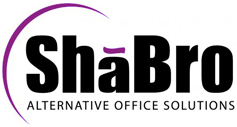
Competitive markets demand more from companies
The job market is such that offering a competitive salary to employees is not enough. Employers seeking the best talent from a workforce demanding more are offering multiple types of benefits, including not only paid vacation time and health insurance but also other enticements like long-term disability coverage, tuition reimbursement, pension and investment plans and even gym memberships. To attract top employees, companies are also offering other types of benefits, such as education assistance, wellness programs and child care assistance.
How a business can get out front
Health insurance:
About 49 percent of the U.S. population receive employer-sponsored health insurance, according to a study by the Kaiser Family Foundation. Florida ranks fourth with about 40 percent of the population receiving employer-sponsored health insurance. Companies with 50 or more employees risk paying an assessment if they do not offer affordable health insurance as mandated by the Affordable Care Act. “Affordable” coverage is adjusted annually for inflation and should not exceed 9.83 percent of an individual’s income.
Flexible hours:
Offering work schedules that allow employees to work non-traditional schedules is becoming more common. For employees who care for children or other family members appreciate the flexibility.
Shorter days ahead of holidays:
Consider offering employees the option to leave work early immediately ahead of a holiday. This can allow for less paid time off and allow a longer holiday break.
Remote work options:
These types of benefits can result in significant cost savings for workers, allow for more freedom and flexibility and improved job satisfaction.
Commuter benefits:
These allow companies to cover employee commuter costs up to the IRS maximum of $270 a month. These costs include reimbursements for highway commutes to the workplace as well as public transportation.
Fridge, pantry filled with food:
Providing healthy food options in the workplace is another attractive perk for employees and helps keep them energized for the day.
Company-sponsored events:
A day out of the office for a little fun in the sun can also build morale, allowing employees to get to know each other a little better. Office parties, happy hours and virtual get-togethers also enhance a positive work culture.
Benefits employers must offer
Federal mandatory types of benefits include:
Social Security and Medicare:
These are statutory benefits. Funding for Social Security and Medicare is provided through the Federal Insurance Contributions Act (FICA). It provides benefits for retirees, disabled individuals, and children. Employers are required to withhold Social Security tax at 6.2 percent of gross compensation up to the Social Security wage. Employers must withhold Medicare tax at 1.45 percent of gross compensation.
Unemployment insurance:
This is a requirement for employers through payroll taxes at both the state and federal level.
Workers’ compensation insurance:
This provides financial support to people who can’t work because of an illness or workplace injury. If an employee is injured or becomes ill while on the job, employers are required to cover medical bills and a limited amount of income while the employee recovers.
Family and Medical Leave Act:
Entitles eligible employees of covered employers to take unpaid, job-protected leave for specified family and medical reasons. It allows for up to 12 weeks of unpaid leave during a 12-month period.
How ShaBro can help
ShaBro can assist businesses in ensuring they are meeting its obligations to provide assistance and compensation required by Social Security, Medicare, unemployment and workers’ compensation insurance. ShaBro is also your resource to develop a total compensation package that will attract prospective employees and retain the ones you have.
For more insight on benefits employees are looking for, go to: https://www.indeed.com/career-advice/starting-new-job/what-benefits-should-i-ask-for









